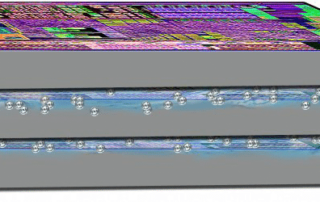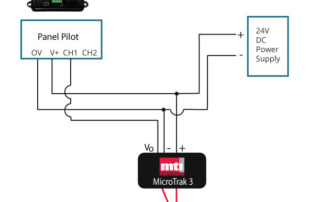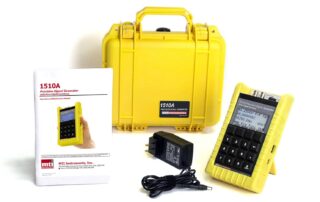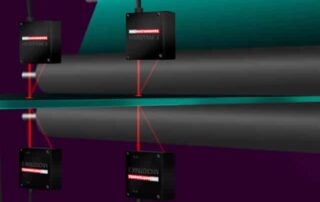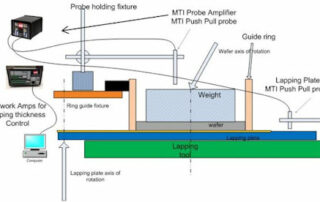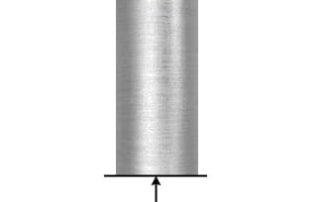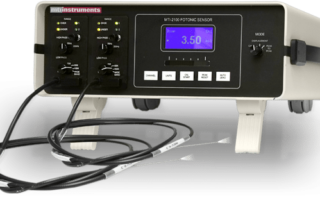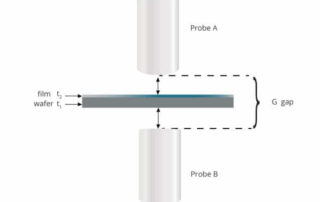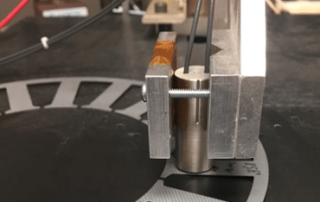Blogs
Capacitance Sensors Facilitate 3D IC Construction
Capacitance Sensors Facilitate 3D IC Construction Semiconductor, Research & Development 3D IC Construction Distance, Positioning, Displacement Description [Application Note 70518] To boost device performance, today's semiconductor and microelectronics manufacturers are building three-dimensional integrated circuits featuring vertically-stacked silicon wafers and dies. The rationale is simple. Exploiting the Z-axis avoids the power and footprint penalties associated with two-dimensional processes. Implementing the rationale, however, is not so simple. Going vertical requires coplanar surfaces to make contact with all pins, pads, and pillars. Problem Typically, manufacturers measure the angle and gap between two planes [...]
Adding a Digital Panel Meter to MTI Analog Output Products
Adding a Digital Panel Meter to MTI Analog Output Products Consumer Electronics Electronics Parts Profiling Thickness Description Some MTI Products with Analog outputs, Accumeasure 9000 and Microtrak 3 laser  How To Use Digital Displays with Analog Outputs MTI Microtrak 3 Lasers and some of our Accumeasure amplifiers such as the Accumeasure 9000 only have analog outputs. If you wish to add a digital display, then the Lascar Panel pilot © makes a nice cost effective (~ $110) addition - Fig 1. These Digital panel meters have both 1 [...]
Signal Generator Calibrates Strain Gauge Electronics
Signal Generator Calibrates Strain Gauge Electronics Industrial, Automotive, Transportation, Research & Development, Civil Engineering Calibration of Strain Gauge Electronics Amplitude; Bending, Tensile & Compression Description [Application Note 31218] The strain gauge has been in use many years and is the fundamental sensing element for many types of sensors, including pressure sensors, load cells, torque sensors, and position sensors. The majority of strain gauges are metallic foil types, available in a wide choice of shapes and sizes to suit a variety of applications. Foil type strain gauges feature a pattern or [...]
CAPACITANCE SENSORS TRACK BRAKE ROTOR THICKNESS VARIATION
[Application Note 51018]Today’s cars and trucks offer unprecedented fuel efficiencies and handling characteristics – thanks, in part, to vehicle lightweighting. Applied to all vehicle components, lightweighting lowers stress and strain to improve mileage and boost overall performance.In keeping with this trend, today’s brake rotors are thinner and lighter than those of just a few years ago. In addition, many feature cooling vents to further improve performance. These changes, however, reduce available braking surface, forcing automotive engineers to consider alternative materials and designs. Problem Because the extreme temperatures and forces generated during braking can easily lead to rotor distortion and failure, [...]
Thickness Information of Composite Materials
Thickness Information of Composite Materials Industrial Thickness Information Of Composite Materials Thickness Description Introduction: Composite materials consist of two or more materials which include a substrate or base material such as paper, cotton cloth, or glass cloth along with a resin or adhesive such as epoxy, melamine, or silicone. To make a thermoset laminate, the base material is coated with the adhesive so that layers of material can be pressed under heat and pressure into sheet form. The Problem: Composite material thickness needed to be verified prior to forming or [...]
Semiconductor Wafer Lapping and Displacement Measurement
Semiconductor Wafer Lapping and Displacement Measurement Semiconductor Semiconductor Wafer Manufacturing Displacement Description Semiconductor Wafer Lapping and Displacement Measurement This application note explains how MTI's Accumeasure technology was used with a lapping machine to measure displacement (wafer material removal) and determine the new semiconductor wafer thickness. Changes in electrical capacitance (displacement) were measured and then directly converted into a 24-bit digital reading to obtain precise digital thickness measurements. During lapping, a wafer of known start thickness is placed on a rotary lapping table. The backside of the wafer faces downward and [...]
LED SUBSTRATE THICKNESS
Industry Semiconductor Applications Photolithography Using Capacitance Sensors Measurement Type Positioning Description Remember that old acronym, GIGO? Garbage in garbage out, it can apply to raw materials as well as programming. Sapphire wafers need to be of a certain quality to ensure maximum yield. Excessive TTV, Bow, and Warp lead to premature LED failure. LED manufacturers need to inspect incoming wafers. Wafer producers also need to check and control TTV, Bow and Warp. The market for sapphire wafers, driven by the growth in LED manufacturing, is booming. While the price [...]
Measuring Piezoelectric Properties with Fiber Optics
Measuring Piezoelectric Properties with Fiber Optics Research & Development Piezoceramic, 1-3 Pzt / Polymer Composite And Pvdf Film Amplitude Description Figure 4: Fiber Optic MTI 2100 Fotonic Sensor Introduction Researchers from the University of Arizona used the MTI-2000 Fotonic Sensor to measure the indirect piezoelectric properties (d33) and strain of bulk ferroelectric and thin film samples. The team then correlated these results with data acquired from direct piezoelectric effect measurement. By comparing data sets, the researchers concluded that the MTI-2000 provides a useful optical technique for measuring the [...]
Thickness Gauge Measurement With Conductive Wafers and Thin Films
Thickness Gauge Measurement With Conductive Wafers and Thin Films Consumer Electronics Electronics Parts Profiling Thickness Description Using MTI's capacitive thickness gauge Proforma 300i with conductive wafers and thin films G = (a+b+t1+t2 ) Where G is the fixed gap between two probes When making the thickness measurement t2 can appear as t2 (film thickness) when it is a conductor, or 0 thickness when t2 is just air. So t2 will vary between the actual film thickness t2 if it's a conductor all the way down to 0 thickness if [...]
Two Ways to Measure Stamped Sheet Metal Thickness
Two Ways to Measure Stamped Sheet Metal Thickness Solar, Semiconductor Measurement of Ungrounded Targets Thickness, Metrology Description Learn how to measure stamped sheet metal thickness with MTI's Digital Accumeasure, a high-precision capacitance measurement system with nanometer accuracy and stability. Problem High silicon steels are alloys of iron and silicon that are easily magnetized and demagnetized. They can be supplied as sheet metal with a very thin dielectric coating. As this application note explains, precise measurements of stamped samples with a dielectric coating of ~ 10µi were needed. Solution MTI’s Digital [...]

